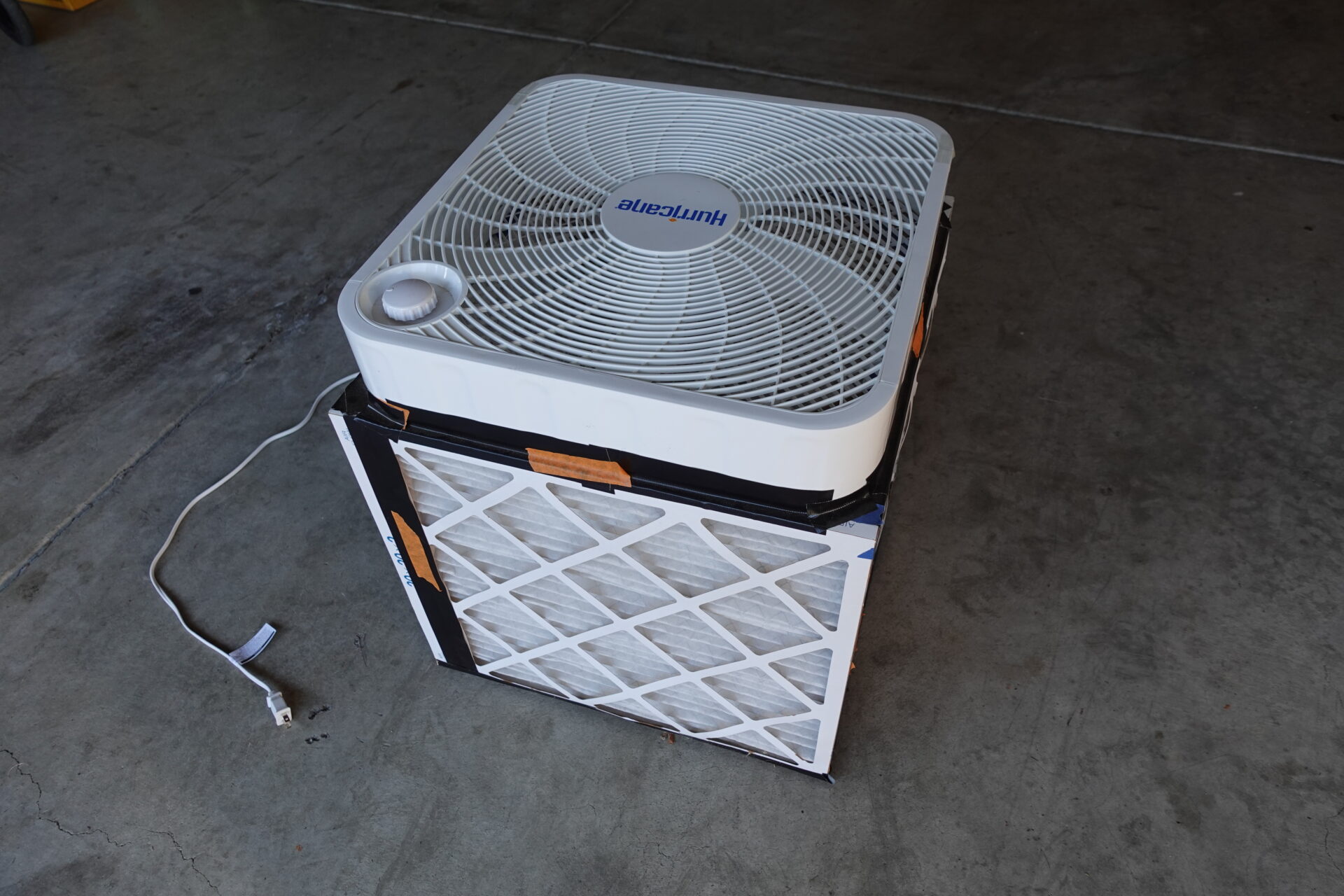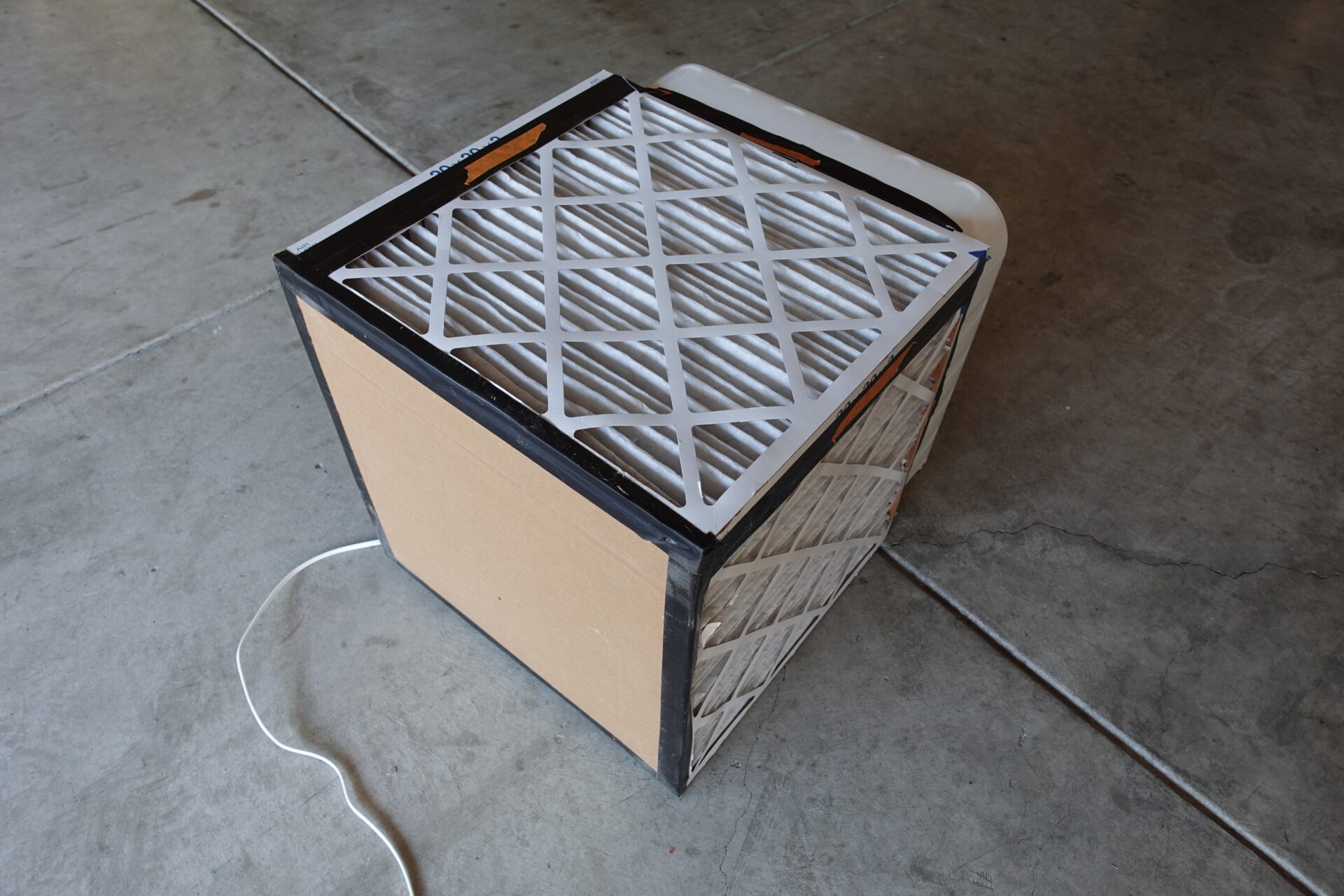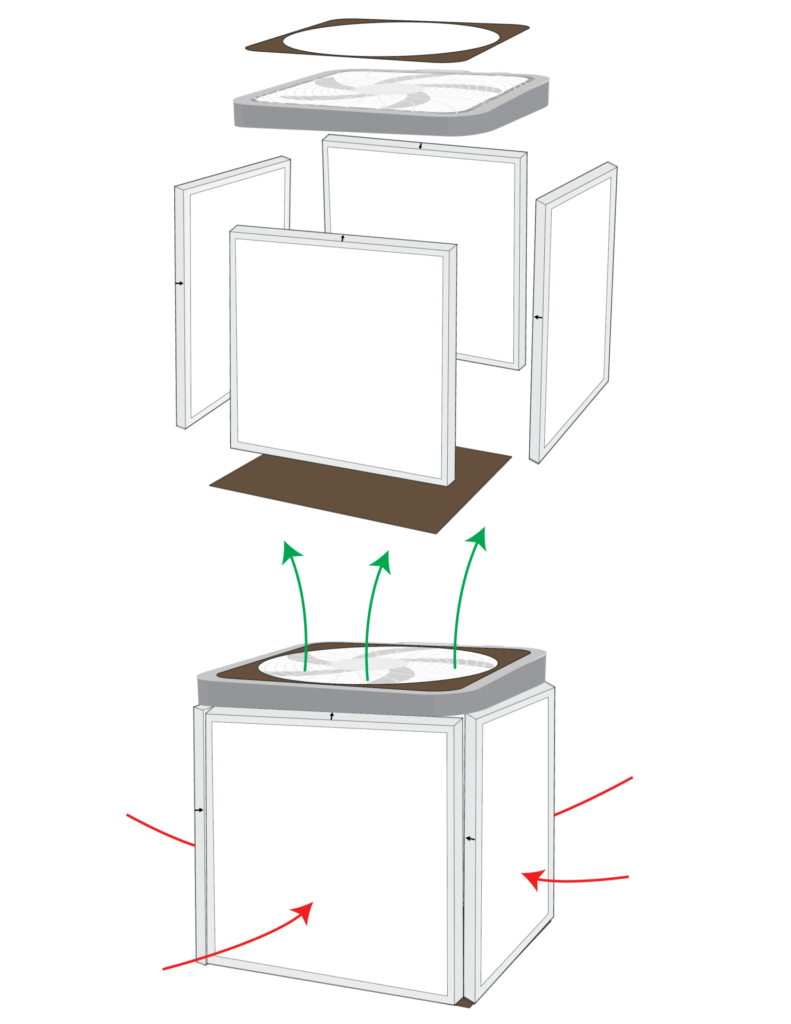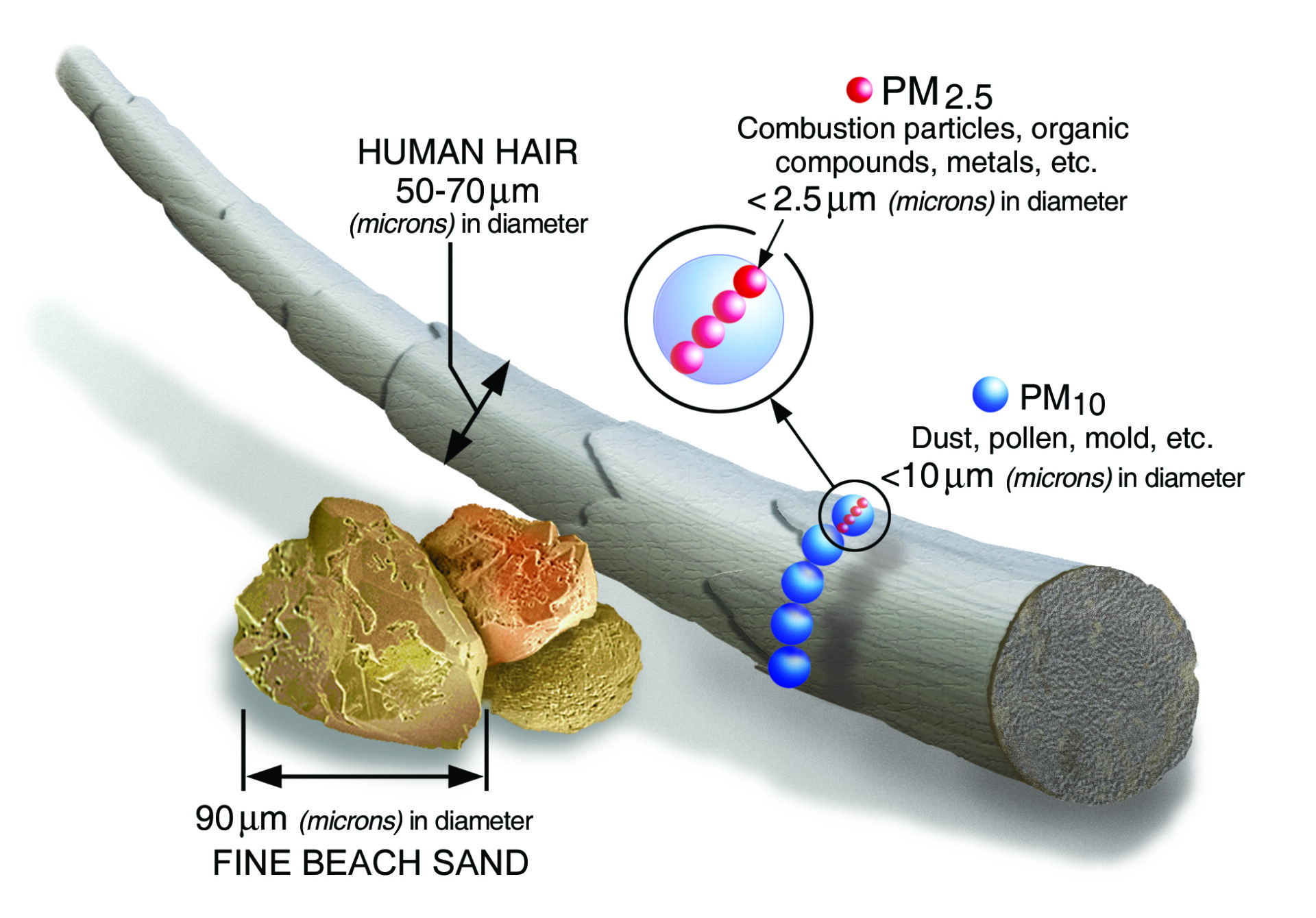Keep your lungs happy and wood dust free with this cheap and effective DIY air filter for your garage or workshop.

Having small particulates of wood dust floating around in the workshop has always been a concern for woodworkers. While we know the theoretical dangers to the lungs, it’s not always apparent right away, and the effects can accumulate over time. Repeated exposure to these microscopic dust bunnies can cause real health problems such as:
- Respiratory irritation: Wood dust can irritate the nose, throat, and lungs, causing symptoms such as coughing, sneezing, shortness of breath, and chest tightness.
- Allergic reactions: Some people are allergic to wood dust and can experience symptoms such as asthma attacks, rhinitis (runny nose), and dermatitis (skin rash).
- Occupational asthma: Long-term exposure to wood dust can increase the risk of developing occupational asthma, a chronic form of asthma that is triggered by exposure to certain workplace allergens.
- Hypersensitivity pneumonitis: This is a lung disease that can develop in people who are exposed to wood dust on a regular basis. It is characterized by inflammation of the lungs and can cause symptoms such as shortness of breath, cough, and fatigue.
- Cancer: The International Agency for Research on Cancer (IARC) has classified wood dust as a Group 1 carcinogen, meaning that it is known to cause cancer in humans (Link). Wood dust has been linked to an increased risk of cancer of the nasal cavity, paranasal sinuses, and nasopharynx.
Solution: The Corsi–Rosenthal Box
Here is one cheap and easy solution to filter some of these nasty particulates:

This solution was originally designed to remove virus particles from the air during the COVID-19 pandemic. Researchers Dean Richard L. Corsi and Jim Rosenthal, teamed up to develop a cheap DIY filtration system that could be placed indoors and prevent the spread of the virus.

This useful invention can also be used to filter smoke from wild fires, remove allergens, and most pertinent to our world — reduce wood dust particulates in the air.
PROS
- 5-10x cheaper than commercial alternatives
- Light-weight
- Relatively easy to assemble
- Variety of applications:
- Reduce smoke from wildfires
- Quickly dry paint and finishes
- Remove pollen
CONS
- Bulky in size (L 21 3/8″ x W 21 3/8″ x H 23 3/4″)
- Potentially loud, depending on the box fan and speed
- Aesthetics: it’s not the prettiest but it can be dressed up, painted, or decorated for more fun.
Design & Build

Talk about a simple design. Only a few materials are required:
- 1x 20″ Box Fan
- 4x MERV-13 Air Filters (20x20x2)
- Duct Tape
- Scissors
Note: An alternate design includes a fifth filter on the bottom which may work well if you hang the box. Although, if you hang the fan, the speed control knob will be difficult to reach.
I picked up all the materials for about $75. Compare that to a commercial air filter which can cost anywhere from $300 to $700. This makes it quite an affordable alternative.
Assembly
The assembly is relatively straightforward and easy to build. I had the kids join the fun and we assembled in about 90 minutes. It is recommended to be placed in the middle of the floor and should be at least 3 feet from the nearest wall.
Detailed instructions on how to build can be found here.
How Effective Is It?
Now let’s compare the size of wood dust particles to the efficacy of MERV-13 air filters. The size distribution of wood dust can vary depending on the type of wood and how the wood is processed (i.e. sanding vs. cutting). From my research (links below), the size can vary from a few microns to several millimeters. One micron, or a micrometer (µm), is a unit of length equal to one millionth of a meter (0.000001 m). For comparison, a human hair is about 70 microns in diameter.

Unfortunately, you won’t be able to see these tiny particulates in the air because they are just too small. Furthermore, these smaller wood dust particles may be more likely to remain suspended in the air for longer periods of time, making them more likely to be inhaled. Yikes! So how much can the air filters help?
Let’s talk about the rating system of MERV (Minimum Efficiency Reporting Values), which report a filter’s ability to capture larger particles between 0.3 and 10 microns (µm). According to the EPA, the MERV-13 filter should filter:
Average Particle Size Efficiency in Microns 0.30-1.0 greater than or equal to 50% 1.0-3.0 greater than or equal to 85% 3.0-10.0 greater than or equal to 90%
From these numbers, you can see this is not 100% effective, but can definitely contribute to cleaner air. So having the fan running will help to collect and filter these particulates, but we should not rely solely on this solution for respiratory protection.
We have measured the filtration efficiency for particles >0.5 microns of a DIY, open-source air filtration system, the Corsi-Rosenthal Box, comprised of a box fan and MERV-13 filters. At the lowest speed the clean air delivery rate for our Corsi-Rosenthal Box is >600 ft3 min−1 (1,019 m3 h−1) for a median particle diameter of 1.2 microns, demonstrating exceptional performance relative to most commercially available filter-based air cleaners.
Characterizing the performance of a do-it-yourself (DIY) box fan air filter by
Rachael Dal Porto,Monet N. Kunz,Theresa Pistochini,Richard L. Corsi
& Christopher D. Cappa
Conclusion
This DIY Dust Filter can be a great addition to the workshop in reducing the fine particulates in the air, but it probably should be used in conjunction with other respiratory protection. Nonetheless, it’s a fun build and a cheaper alternative to the commercial alternatives.